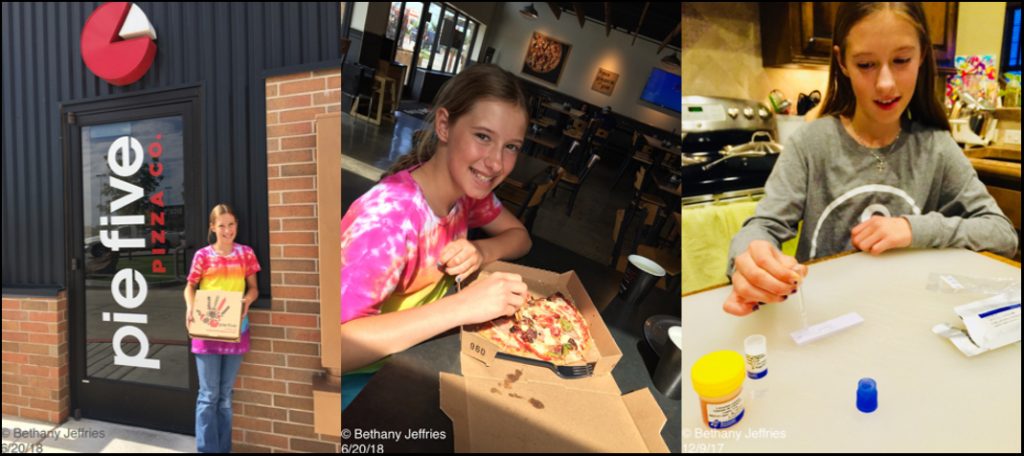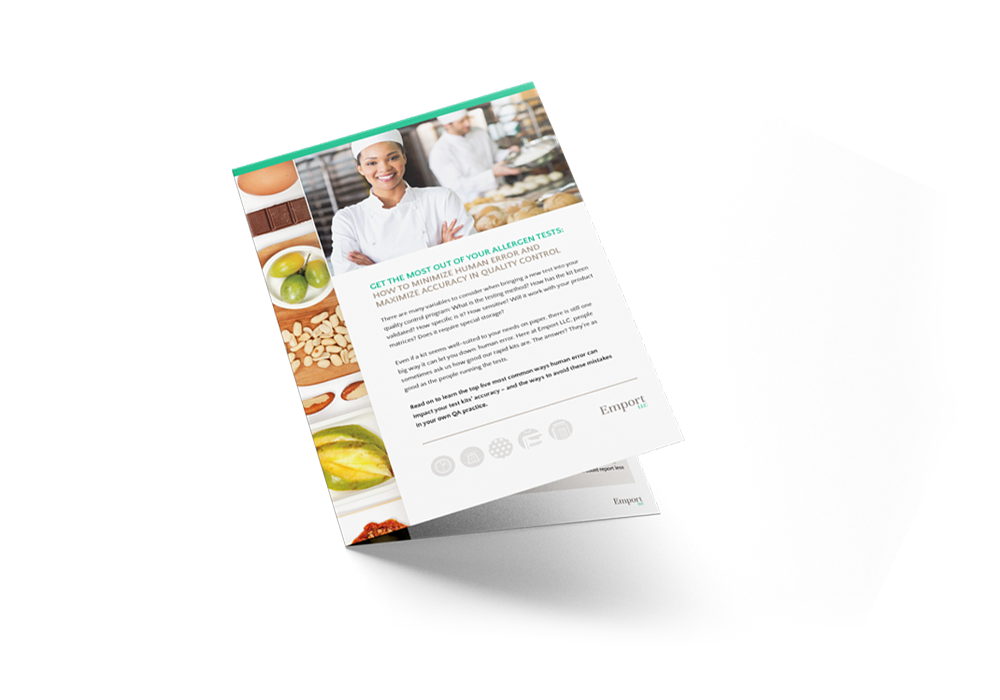Today’s blog post is especially exciting, because it’s been written by our guest blogger, Bethany Jeffries. Bethany is an award-winning young scientist who used GlutenTox Home to test some interesting hypotheses about cross-contamination of popular gluten-free foods. Her science fair project earned first place (!!!) in the biomedical division at her area’s regional competition — and she was kind enough to share her discoveries with us. Read on to learn how Bethany set up her science fair experiment and what safe and unsafe foods she uncovered by using GlutenTox Home!
My name is Bethany Jeffries and I am from Norman, OK. I have Celiac which means I cannot eat gluten. Sometimes when I eat gluten I have stomach pain, other times when I eat gluten it is invisible damage to my gut to where my intestines cannot absorb nutrients and I feel horrible. It can take up to a month to heal from gluten exposure.
I LOVE Pie Five pizza especially because they have gluten free crust and cauliflower crust. The employees wash their hands and change their gloves for me too.

I was however concerned about cross contamination, where gluten could be transferred from the other pizzas to the marinara sauce or the toppings. At my school in 6th grade this spring I decided to do my science fair project on gluten cross contamination of some of my favorite foods. I chose to test Pie Five pizza sauce along with four other shared food items that could be contaminated with gluten. My parents helped a little with the project and bought the GlutenTox Home test kit I used for the experiment.
I wanted to test how easy it is for gluten to get into my food which could potentially make me sick. My main question I want to answer is how much gluten cross contamination is in shared food items like sauces and condiments; and is it enough to make someone with Celiac sick? I spent a lot of time figuring out what I should use to test for gluten and how to do the project. I learned that to NOT get sick when you have a gluten intolerance or celiac that the gluten molecules must be less than 20 parts per million in gluten free food items. Isn’t that interesting?

Gluten is a general name for the proteins found in wheat, rye, barley and and other grains. Gluten helps foods maintain their shape, acting as a glue that holds food together. Gluten can be found in many types of foods, even ones that would not be expected.
According to celiac.org: When people with celiac disease eat gluten (a protein found in wheat, rye and barley), their body mounts an immune response that attacks the small intestine. These attacks lead to damage on the villi, small fingerlike projections that line the small intestine, that promote nutrient absorption. When the villi get damaged, nutrients cannot be absorbed properly into the body.
To test for gluten my mom bought a GlutenTox Home Test Kit online from a company called Emport LLC. GlutenTox test kits use the “G12 antibody to recognize the highly immunotoxic 33-mer peptide of α- gliadin protein that induces a response in people with celiac disease.” I tested 5 gluten free food samples for the presence of gluten. The five samples were possibly cross contaminated from utensils or equipment that might have been in contact with foods containing gluten. I followed all the directions for using the GlutenTox test kit and recorded all my results using the scientific method.

When the results were done three out of the five food items had gluten in them because they tested out positive. I learned that it doesn’t take much gluten cross contamination to be enough to make someone with celiac sick. I also was shocked the oats tested positive for gluten because pure oats do not contain gluten. That means the oats are contaminated with gluten in the fields, harvesting, and processing. I can no longer eat my grandma’s no bake cookies unless she uses oats that are Certified Gluten Free. I am happy to report that the Pie Five pizza sauce sample I tested was negative for gluten and I can continue eating at my favorite pizza place.
This spring my science fair project did well at my school and I was chosen to go on to the State of Oklahoma Regional Science Fair held at UCO in Edmond, OK. The judges thought my project was excellent and unique. I was awarded FIRST PLACE in the biomedical division (6th grade).

Thanks Bethany! We hope this is just the beginning of a long career of gluten-free discoveries!
Readers, are you inspired to use GlutenTox Home for a science project of your own? Feel free to call or write us any time – we love talking with students (and parents) about gluten experiments. And before you start, we’d suggest checking out the following resources before you start testing:
- Gluten-Free Science Projects: examples of kid-friendly experiments to get you inspired to explore gluten in your community
- Curious about allergens like milk or soy? Our AlerTox Sticks kits are suitable for some types of student-friendly science experiment as well
- Would you like to learn more about the G12 Antibody? Read our article!

Need to test for gluten at home?
Commercial-quality, user-friendly. Clear results in less than 20 minutes.


